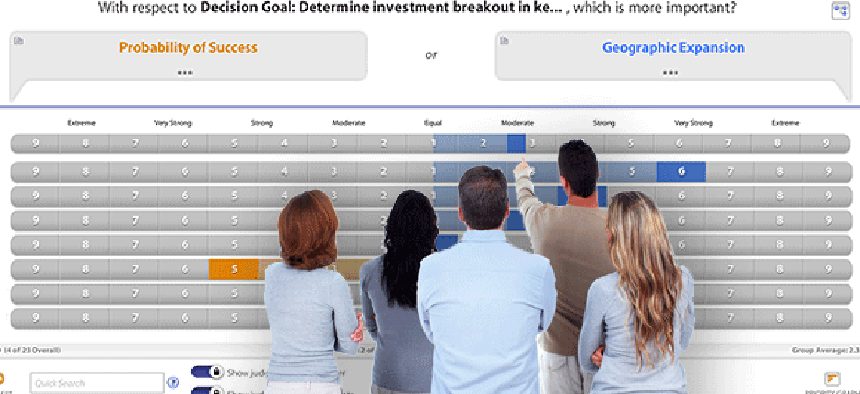Analytics, Web services boost Decision Lens software

Latest version of the software used by several large agencies helps managers more easily compare priorities and viewpoints between teams across their organizations.
Agency managers need an accurate window into their decision-making process, including the ability to easily compare priorities and viewpoints between teams in order to balance the distribution of IT investments across an entire organization.
To enhance agency decision-making, Decision Lens has added new analytic capabilities to its cloud-based, collaborative software that can combine the opinions of key staffers and lets managers balance the distribution of funding in order to arrive at more informed results. the software can be used for a variety of projects including strategic planning, product portfolio planning, capital planning, research and development, vendor selection and procurement, according to a company release.
Decision Lens 3 Version 1.2 provides tools that more naturally follow the progression an organization takes when arriving at a decision, John Saaty, the company’s president and co-founder, said in an interview.
“What we are moving towards is [giving agencies] more visualization and insight into the decisions that [their] organizations are making.” As government managers make budgeting decisions, especially during this era of sequestration, it is important that they understand the priorities of different groups when they are making budget cuts to ensure equality across the various organizational groups, Saaty said.
A new capability called “participant group” has been added to Decision Lens that lets managers separate people by groups to better understand their priorities. “We never had the capability to bucket them into different organizations within a group,” Saaty said. The feature will be essential for departmental agencies such as the Agriculture Department, which uses Decision Lens to organize IT investments for the entire department.
Managers in headquarters have different priorities than people in rural development and those in animal and plant services. By parsing the data into different participant groups, you are able to quickly look at gaps between them. “That is important when you start to cut budgets and need to explain to a stakeholder group why cuts were made,” Saaty said. The Homeland Security Department’s IT organization is interested in the participant group feature because it deals with so many component organizations within the sprawling department, he said.
Another new capability is alternative categories, where managers can separate IT investments, capital investments or R&D and technology investments -- into categories such as regions, capabilities or systems.
Web services now lets Decision Lens tap directly into data sources. Prior to this feature, users had to import or export data in or out of the Decision Lens platform. “You would take a snapshot in time and import data into the tool to see how the world has changed since the last time you did that import” data, Saaty said. With Web services, users can directly connect to data in real-time or hourly or daily as the data is changing.
The software has also been aligned with how people think, Saaty said. “We use to mix and match different things together,” but now it offers steps to help frame decisions. For instance, in framing the decision, users can focus on criteria, alternative, rating scales and who is going to participate in the decision.
Decision Lens software is delivered in a software-as-a-service model and is used across government to help set priorities and allocate resources, , Saaty noted. Besides DHS and USDA, other government agencies using the software include Maryland Department of Transportation; U.S. Army, Air Force and Navy; and the Washington Metropolitan Area Transit Authority.
NEXT STORY: NASA builds FAA software to reduce flight delays





